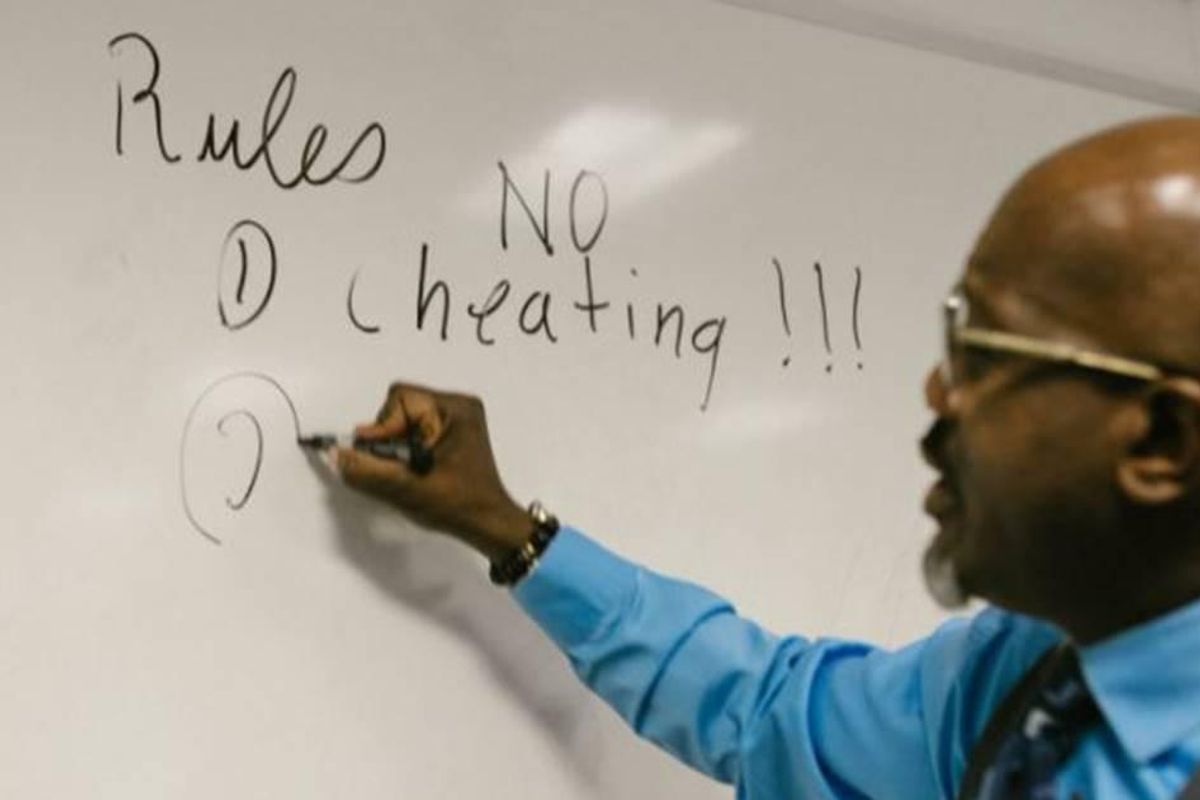People are sharing the one 'simple rule that would fix the world if people actually followed it'
Here are 17 rules that would make life better for everyone.

A teacher lists his class rules.
The world would be a much better place if humans weren’t so … human. We all fall short of perfection. Common sense is, sadly, not too common. And there’s one guy out there who always manages to screw things up when things start getting good.
Call it Murphy’s law. Call it the great “reason we can’t have nice things.” Call it entropy. It feels like a whole lot of pain could be avoided if we all had just a little bit more sense.
But what if there was one rule that we all agreed to follow to make everyone’s life better? What would this magical rule be?
A Reddit user who goes by the name P4insplatter came to this realization and asked the AskReddit subforum, “What simple rule would fix the world if everyone actually followed it?”
They received dozens of simple rules that if everyone got behind would make the world drastically better.
It’s no shock that most of them felt like a variation of the Golden Rule. It’s funny that a lot of folks believe the world would seriously improve if we could just abide by a simple saying that we all learned in kindergarten.
Also known as the “ethics of reciprocity,” the Golden Rule is so innate to humans that versions of it have been found in religions and cultures throughout the world.
Here are 17 of the best responses to P4insplatter’s simple, but world-altering question.
1. Let go
“Let go or be dragged” an old zen proverb I heard at a meditation class. Really changed the way I let myself worry about things." — civagigi
2. Simple, but true
"Don't be a dick." — WuTangLAN93
3. The Golden Rule
"Treat others how you want to be treated." — AlbanyGuy1973
4. It starts with you
"I read somewhere that if you want to change the world, you have to change the community, to change the community change your relationships, and to change your relationships change yourself." — cagibaxii
5. Simple Earth math
"Don't use more resources than what the Earth is capable of renewing." — DaethSpiral321
6. Bill and Ted's rule
"Be excellent to each other." — pnotar
7. The law of Lebowski
“Fuck it, Dude. Let's go bowling." — Bonhomme7h
8. Signal
"Use your turn signal(s) properly." — futilelord
9. The principle of non-agression
"Simple, the non-aggression principle. You don't do, initiate or threat any harm unto others, unless acting in true self defense." — ufrag
10. It works for everything
"Leave it better than you found it." — Narcoid
11. Generosity and humility
"Be generous and humble. Being generous and kind encourages us to perceive others in a more positive light and fosters a sense of community. Humility teaches you to improve and make a positive impact on the world." — SuvenPan
12. STFU
"If you are not educated on the subject, sit down and stfu. Let the experts with years of education and experience talk." — Ch3m1cal420
13. Fairness first
"Everyone gets a chance at one [thing] before anyone gets seconds." — ehsteve23
14. Permanent daylight
"Obviously making daylight savings permanent." — ObviousINstruction18
15. Two ears, one mouth
"Listen more, talk less." — TryToHelpPeople
16. Turn off the lights
"All empty buildings should not have any lights/ac/heating on at night or after business hours depending on the nature of the work. their ac/heating and lights if necessary should only be turned on before the start of the day. This will not only help with energy costs but also with light pollution." — hadrainsgate
17. Don't tread on anyone
"You cannot do ANYTHING without consent." — DeepCompote
This article originally appeared on 03.17.22

